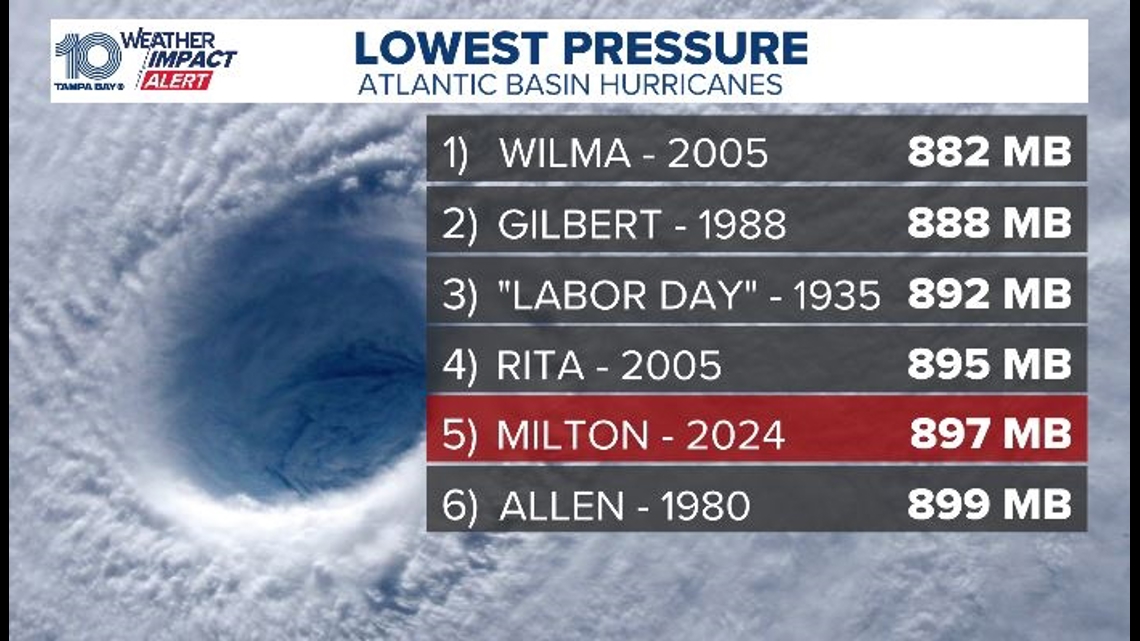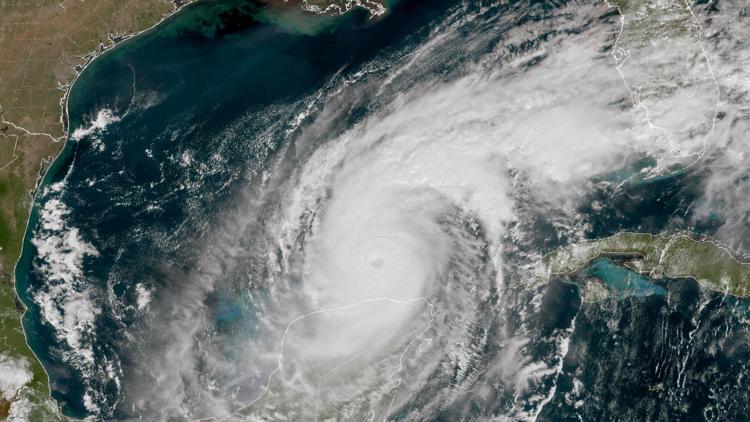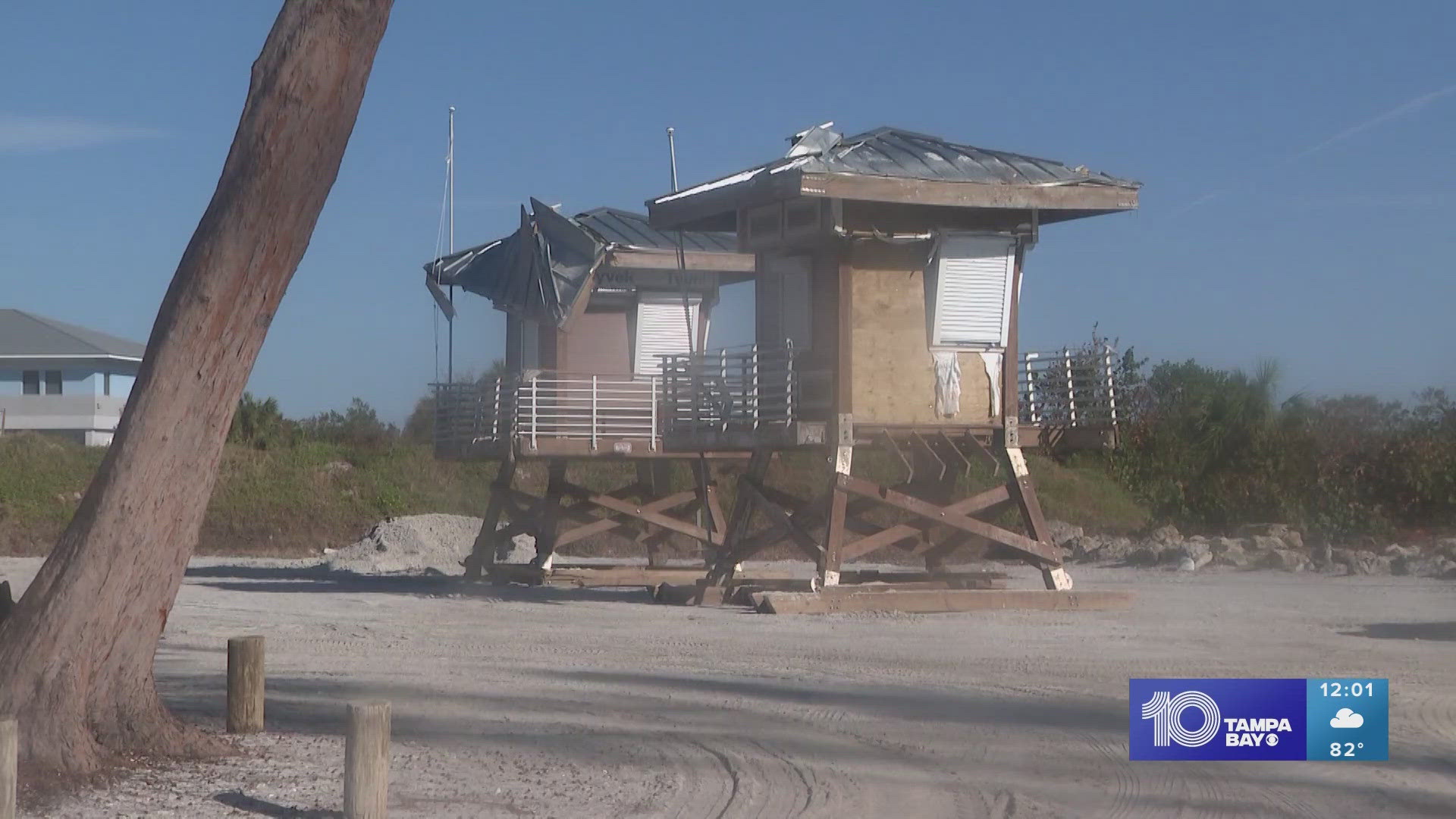TAMPA, Fla. — As we continue to watch Hurricane Milton's track toward Florida, you may hear our 10 Tampa Bay meteorologists on TV talk about the low pressure at the center of the storm.
But, what does that mean? Is it a good thing or a bad thing in terms of hurricane strength?
First, it helps to understand how hurricanes form. As the National Oceanic and Atmospheric Administration explains, warm, moist air over the ocean rises upward and away from the surface of the water — leaving lower air pressure below it.
Higher-pressure air from the surrounding area then gets pulled into this lower-pressure area before it, too, becomes warm and moist and rises. This cycle keeps air swirling in, forming clouds and growing as it is fed by warm air from the ocean.
These pressure differences create something called a pressure gradient. The greater the difference in the pressure within a storm, the higher the pressure gradient force. The higher the pressure gradient force, the stronger the winds.
In short, the lower the surface pressure, the stronger the storm.
It's why surface pressure is used to measure the strength of a hurricane. So, when you hear our 10 Tampa Bay meteorologists talk about lowering pressure at the center of the storm, it means that the storm is getting stronger.
Records show that according to Milton's low pressure measurement at 897 MB, it is the fifth strongest hurricane on record in Atlantic basin history.





